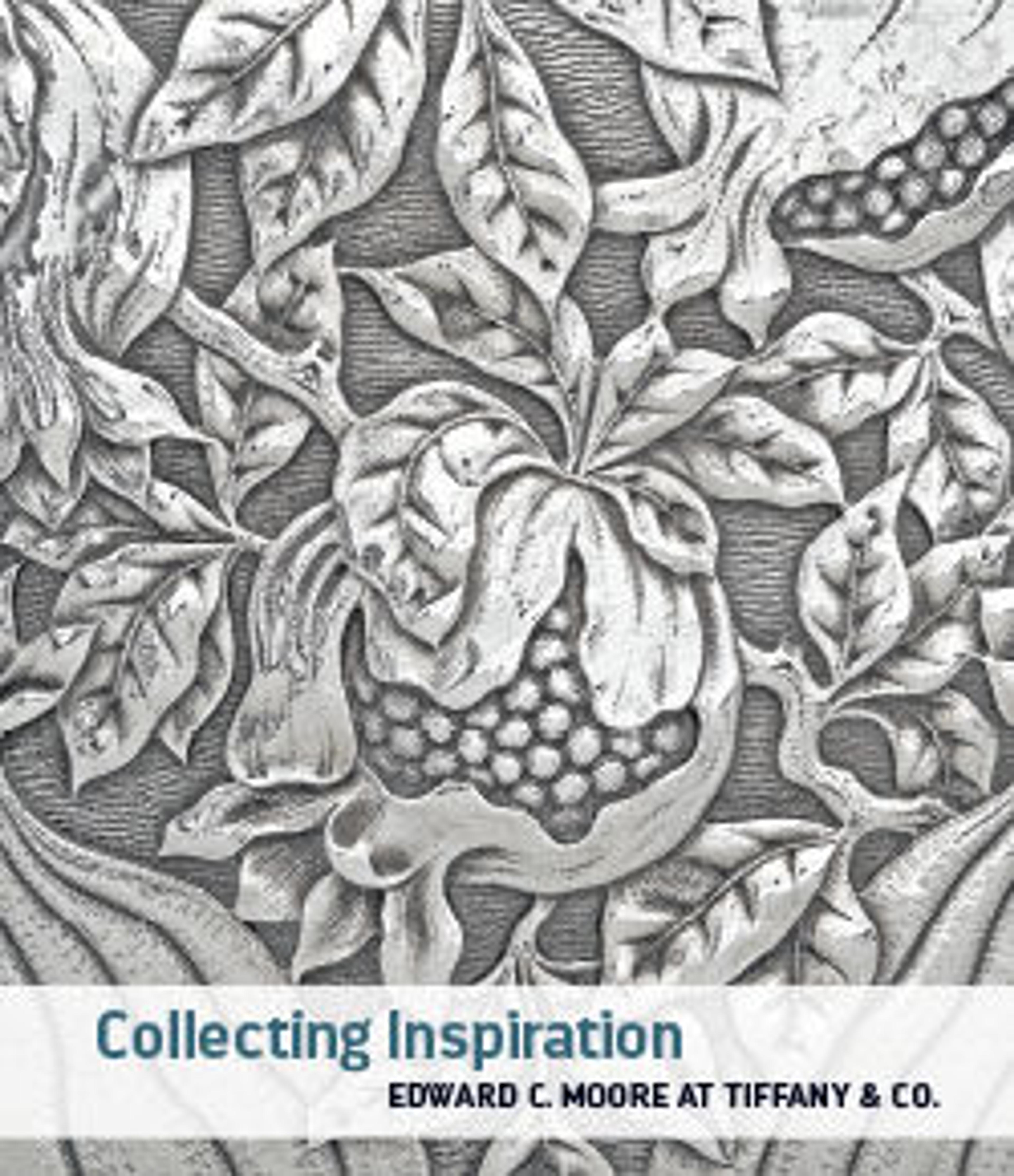Glass oinochoe (perfume jug)
Translucent cobalt blue, with handle and pad-base in same color; trails in opaque yellow and opaque white.
Applied slender trefoil rim-disk with long spout; cylindrical neck; narrow angular shoulder; straight-sided cylindrical body, expanding downward, and then curving in to applied circular pad-base with thick rounded edge and uneven flattish bottom; strap handle attached in pad to top of body over trail decoration, with horizontal tooling indent above pad, drawn up and round in a loop, arching above the rim-disk, and pressed onto back of rim-disk and top of neck.
A fine yellow trail attached at edge of rim-disk; another unmarvered yellow trail wound spirally six and a quarter times around neck; a third yellow trail, marvered, begun on lower edge of shoulder and wound round on body, tooled into a close-set feather pattern and extending as far as the point of greatest diameter; mingling with it in alternating bands, white trails in eleven vertical panels with alternating upward and downward strokes; below this, a thick white trail would round in a spiral nearly three times; a fine yellow trail wound round edge of pad-base.
Complete, but spout of rim-disk broken and repaired; dulling, pitting, and much of surface covered with creamy white weathering and iridescence.
Among the rarer shapes of Mediterranean Group II vessels are the tall, slender oinochoe (pitcher/jug) with a trefoil spout and the lentoid aryballos with twisted glass canes running between the ring handles.
Applied slender trefoil rim-disk with long spout; cylindrical neck; narrow angular shoulder; straight-sided cylindrical body, expanding downward, and then curving in to applied circular pad-base with thick rounded edge and uneven flattish bottom; strap handle attached in pad to top of body over trail decoration, with horizontal tooling indent above pad, drawn up and round in a loop, arching above the rim-disk, and pressed onto back of rim-disk and top of neck.
A fine yellow trail attached at edge of rim-disk; another unmarvered yellow trail wound spirally six and a quarter times around neck; a third yellow trail, marvered, begun on lower edge of shoulder and wound round on body, tooled into a close-set feather pattern and extending as far as the point of greatest diameter; mingling with it in alternating bands, white trails in eleven vertical panels with alternating upward and downward strokes; below this, a thick white trail would round in a spiral nearly three times; a fine yellow trail wound round edge of pad-base.
Complete, but spout of rim-disk broken and repaired; dulling, pitting, and much of surface covered with creamy white weathering and iridescence.
Among the rarer shapes of Mediterranean Group II vessels are the tall, slender oinochoe (pitcher/jug) with a trefoil spout and the lentoid aryballos with twisted glass canes running between the ring handles.
Artwork Details
- Title:Glass oinochoe (perfume jug)
- Period:Hellenistic
- Date:late 4th–early 3rd century BCE
- Culture:Eastern Mediterranean or Italian
- Medium:Glass; core-formed, Group II
- Dimensions:5 15/16 × 2 in. (15.1 × 5.1 cm)
Diam. of foot: 1 5/8 in. (4.1 cm)
Height (without handle): 5 11/16 in. (14.5 cm) - Classification:Glass
- Credit Line:Edward C. Moore Collection, Bequest of Edward C. Moore, 1891
- Object Number:91.1.1383
- Curatorial Department: Greek and Roman Art
More Artwork
Research Resources
The Met provides unparalleled resources for research and welcomes an international community of students and scholars. The Met's Open Access API is where creators and researchers can connect to the The Met collection. Open Access data and public domain images are available for unrestricted commercial and noncommercial use without permission or fee.
To request images under copyright and other restrictions, please use this Image Request form.
Feedback
We continue to research and examine historical and cultural context for objects in The Met collection. If you have comments or questions about this object record, please contact us using the form below. The Museum looks forward to receiving your comments.
